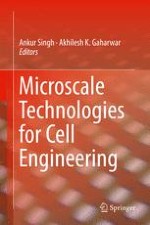2016 | OriginalPaper | Buchkapitel
15. Drug-Eluting Nanotubes for Cellular Bioactivity
verfasst von : Sweetu Patel, Azhang Hamlekhan, Tolou Shokuhfar
Erschienen in: Microscale Technologies for Cell Engineering
Aktivieren Sie unsere intelligente Suche, um passende Fachinhalte oder Patente zu finden.
Wählen Sie Textabschnitte aus um mit Künstlicher Intelligenz passenden Patente zu finden. powered by
Markieren Sie Textabschnitte, um KI-gestützt weitere passende Inhalte zu finden. powered by
